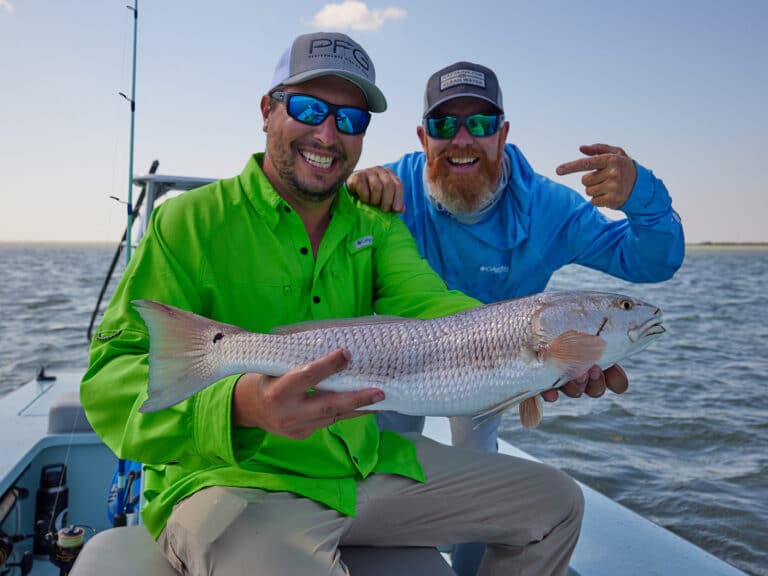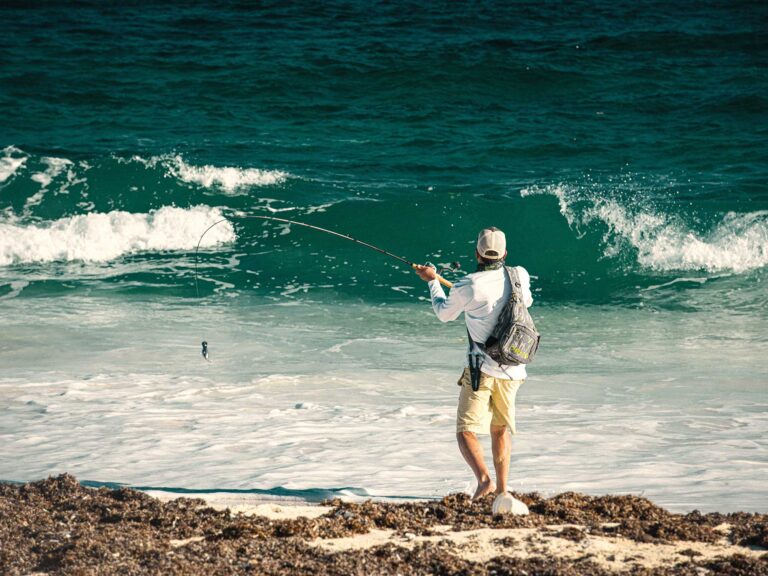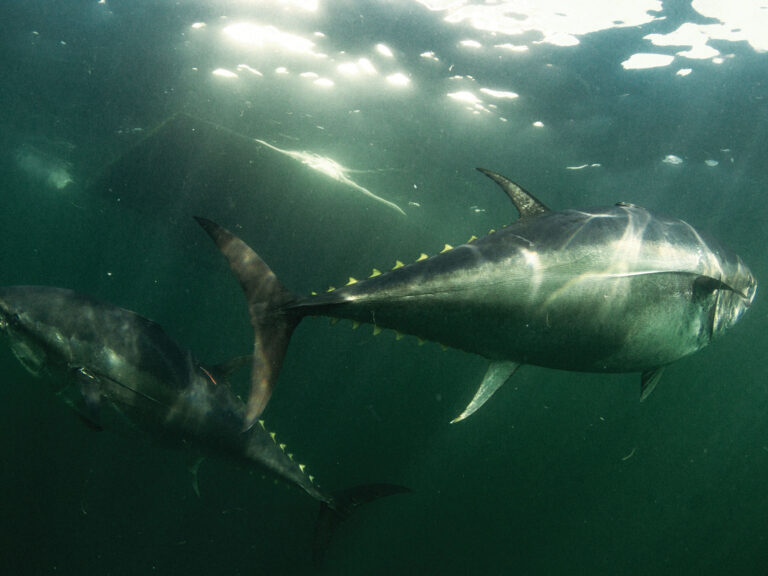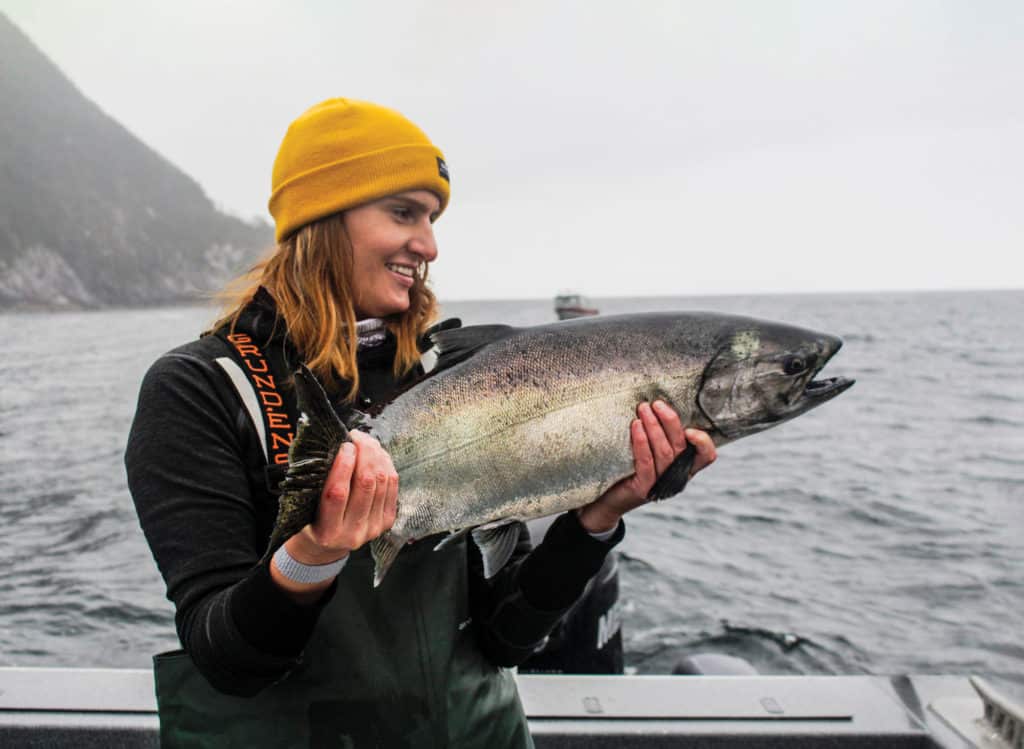
Action was slow that morning, with only a couple of scratched baits. The off-color water offered limited visibility, so we decided it was time for more flash and movement in our trolling spread. On two of the rods, we added a chrome Mylar cone flasher ahead of our rigged baits on the stern line—an 11-inch red-and-chrome plastic flasher about 4 feet ahead of the bait.
We set lines to port and starboard amidships, and one off the transom.
On the starboard line, the cone flasher and herring were set 50 feet down; to port, a rod with a cone flasher and rigged anchovy ran at 40 feet; and on the center line, the plastic flasher and anchovy dropped to 60 feet. Our lines ran above and just below a bait school.
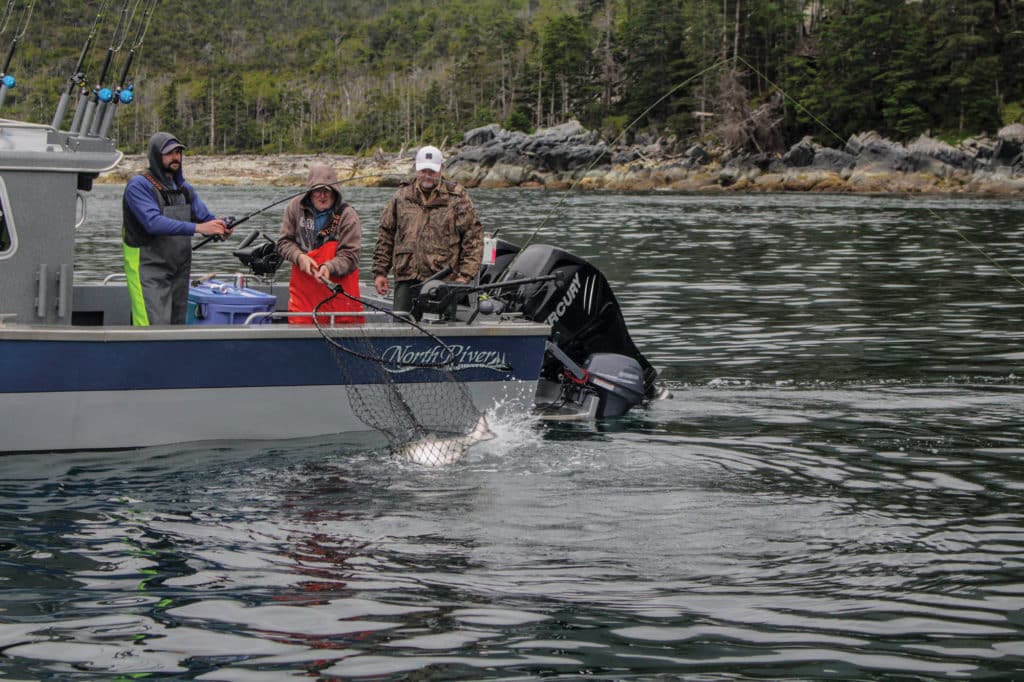
Our first pass produced nothing, but as we circled back to the bait, the line set at 60 feet jumped.
Julius quickly had the rod in hand as a heavy salmon sped away from the boat. After a tough battle, Abe scooped up the 20-pounder. Trolling north, we found bait schools 80 feet down. Adjusting our spread, we stayed in the action until we filled out our limits.
Flasher Combos
In deep or dark, discolored water, a flasher combination is often the difference between success and failure. Their flash and action attract the salmon, complementing the action and smell of a bait or lure.
I like plastic flashers with a wide rotation, and an anchovy or herring rigged behind the flasher on a 3- to 4-foot leader. The 11-inch Bechhold plastic flashers are great for this, and so are metal flashers such as the chrome Gold Star or Martin.
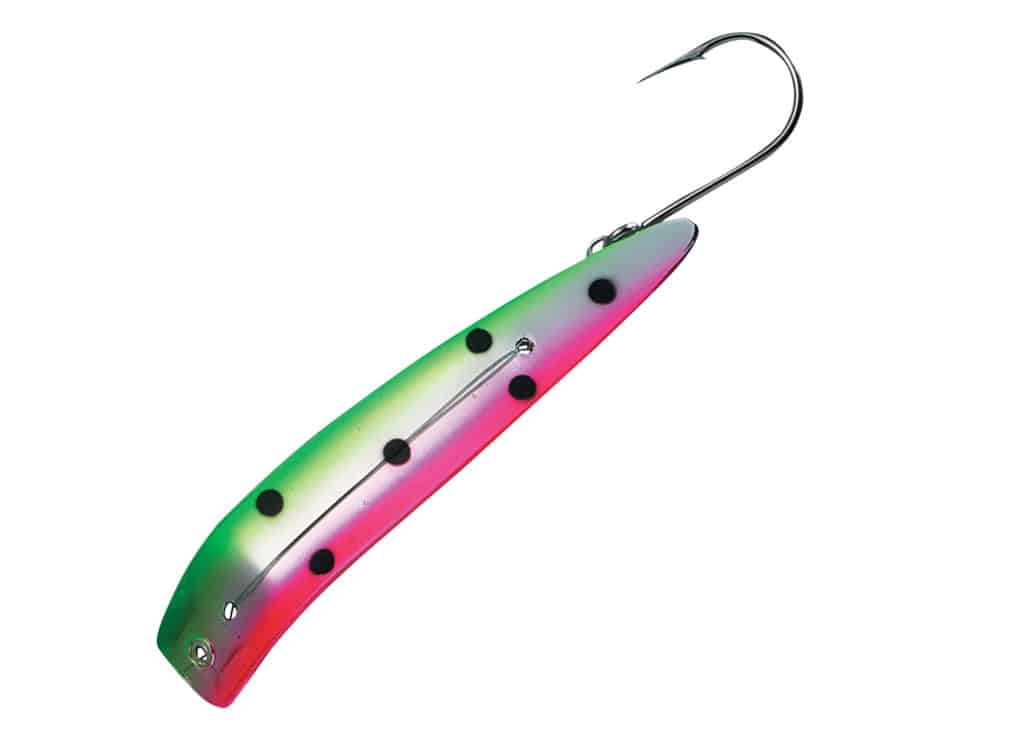
At times, multicolored flashers can be a factor in getting strikes. The green-and-silver Mylar bodies are good producers. Silver flashers with red trim are great when fishing around krill or squid schools. In dark, discolored water, all-white and glow-finish flashers can be deadly.
Read Next: West Coast Salmon Fishing
If you don’t want to mess with bait and prefer to troll hardware, a flasher and artificial lure combo is effective. One of the best rigs is the flasher and plastic skirt, locally called a hoochie. These plastic skirts in pearl white or natural-finish colors are excellent producers.
To set up one for trolling, slip the hoochie onto a 40-pound fluoro leader, i.e., a 1/0 swivel, then fasten a 5/0 to 6/0 open-eye barbless Siwash hook to the swivel with pliers. In place of the swivel, you can also use a soft rubber insert—called a gum pucky—inside the head of the hoochie, and tie your hook to that. Leader length varies depending on how much action you want; the shorter the leader, the more active the hoochie.
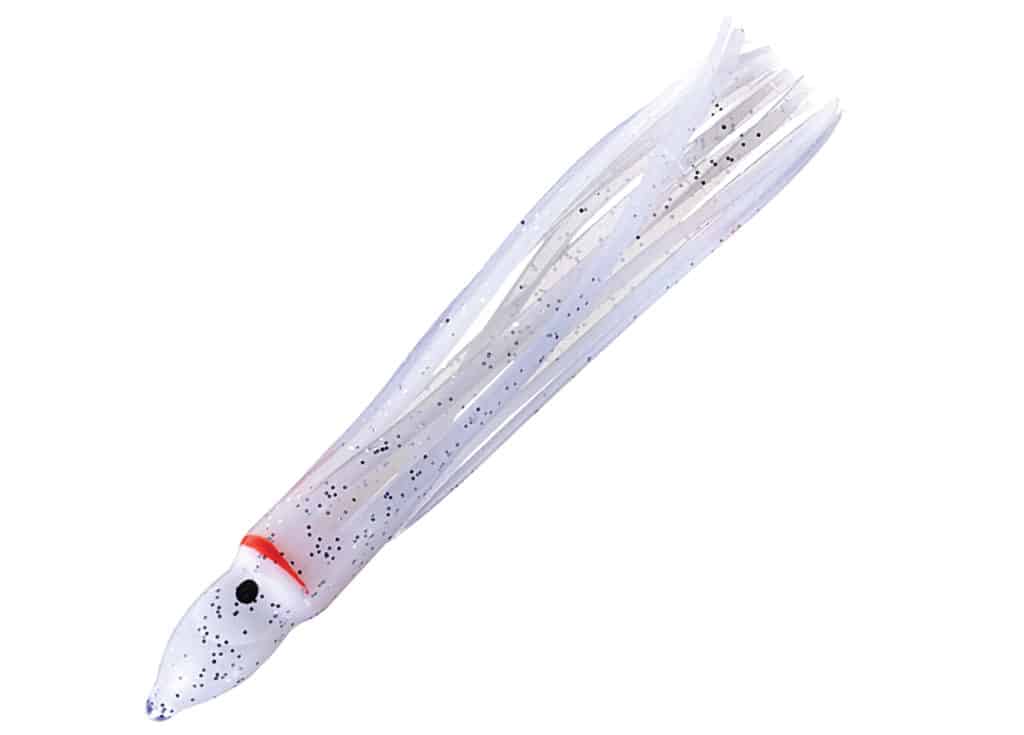
A productive leader length is two to two-and-a-half times the length of the flasher, or 22 to 28 inches.
The flasher provides a snappy rotating action to the hoochie, and also the flash and vibration to attract fish. Tie the leader to the back side of the flasher, and you are ready to go.
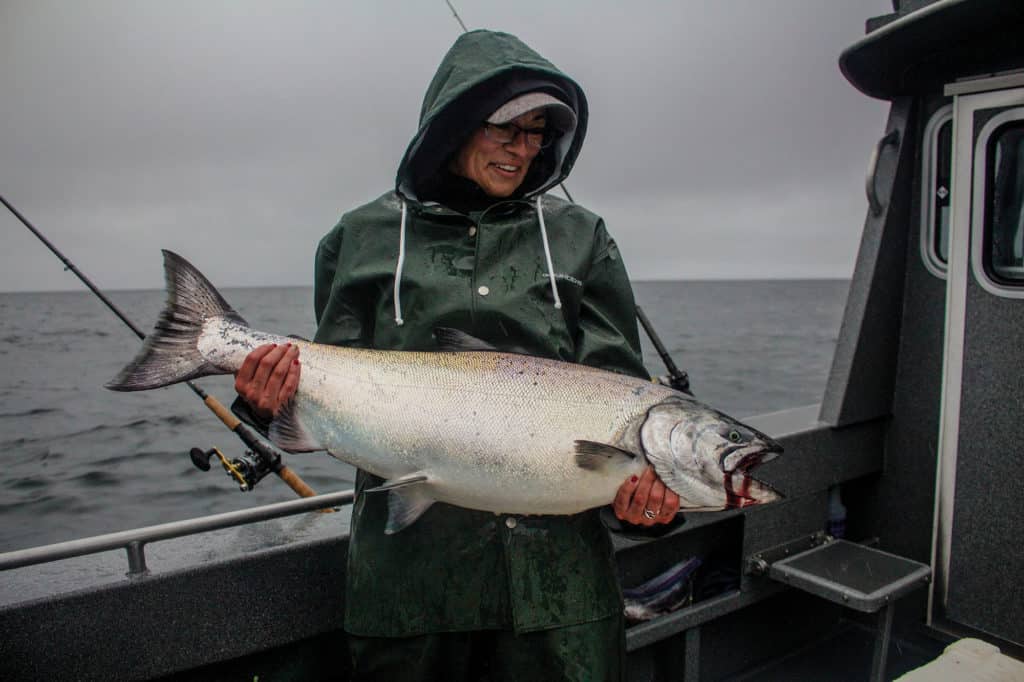
Cone Flashers
Popular and productive for anglers are cone-style flashers, which are flat, plastic cones in assorted colors with reflective tape. Built-in rudders create a tight spinning action. These do not add action to the bait, and are used more as attractors.
The cone flasher rides directly behind the sinker release with the provided snap swivel. Some anglers tie the flasher 12 to 20 inches behind the sinker with good results. Finally, a 6-foot leader is clipped to the flasher, with the bait or artificial lure attached to the end.
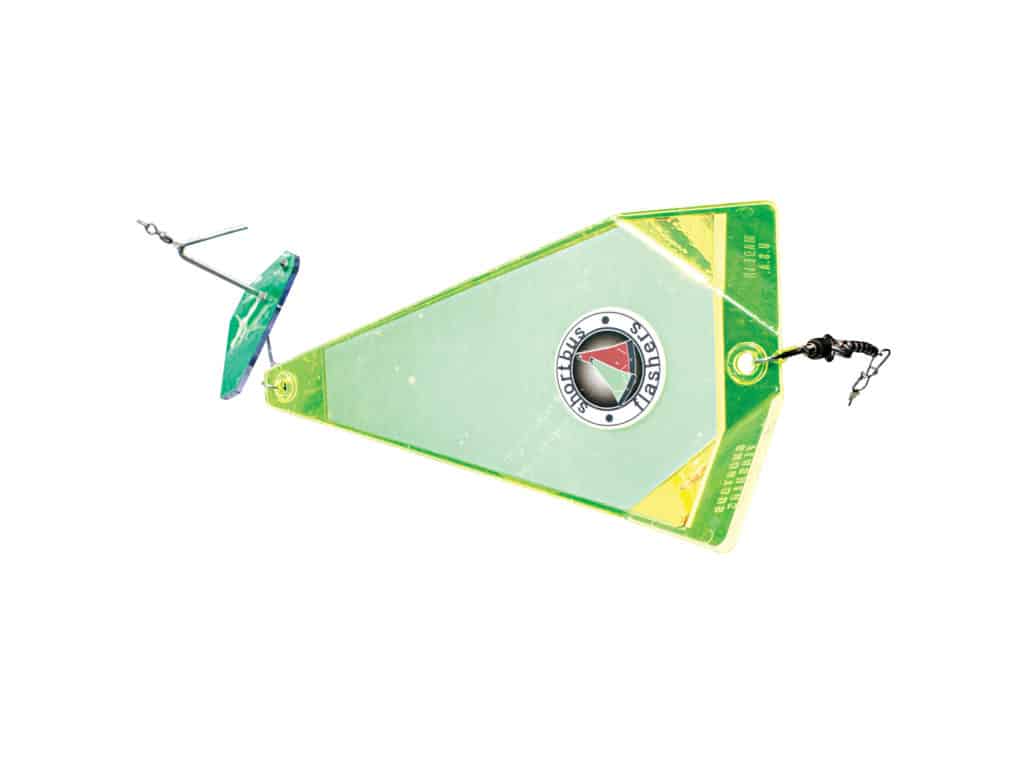
On one day, a bait might be the best choice; the next day, artificial lures are better, so have both options available. Effective lures include the 4 1/2-inch Apex, and metal spoons such as the 3/4- to 5/8-ounce Krocodile, Silver Streak, Coyote and Kingfisher.
Salmon Baits and Rigging
In waters off California, anchovies and herring are the baits of choice. Whole and/or cut plug herring is a solid producer. The latter is rigged with a tandem hook system with Owner SSW 6/0 hooks or similar designs. Leaders are 3 to 4 feet of fluorocarbon, and hooks are snelled in place about 5 inches apart.
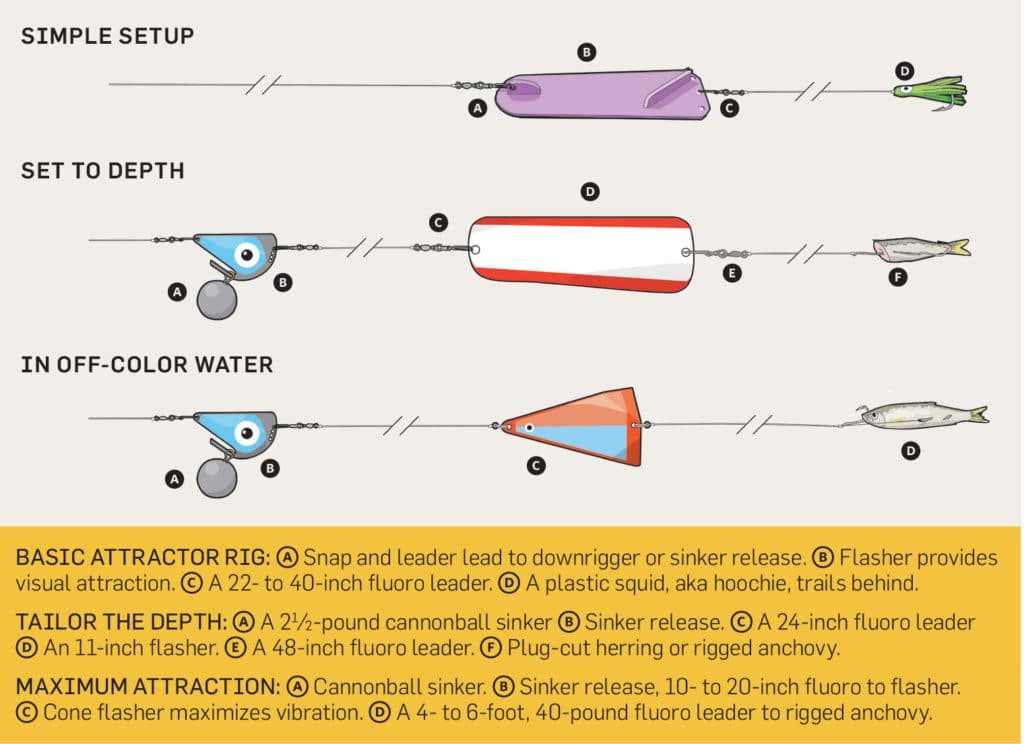
Other rigging methods used are the crowbar hook and the cable baiter in the 5/0 and 6/0 sizes. The crowbar is made of Duranickel or stainless steel and features a thin blade on one end, which has a couple of holes there for rigging and attaching to your leader. The cable baiter is composed of flexible stainless cable, which also has a thin blade with holes on the opposite end for rigging. Crowbars and cable baiters vary in size from 3 1/2 to 5 1/2 inches. Match the length of the hook to the size of the bait for the best results.
To rig the bait, insert the blade end of the crowbar halfway between the dorsal and tail, push it through the body until the blade comes out the mouth, and anchor the bait with a brass pin and rubber band. Attach the leader to the remaining hole.
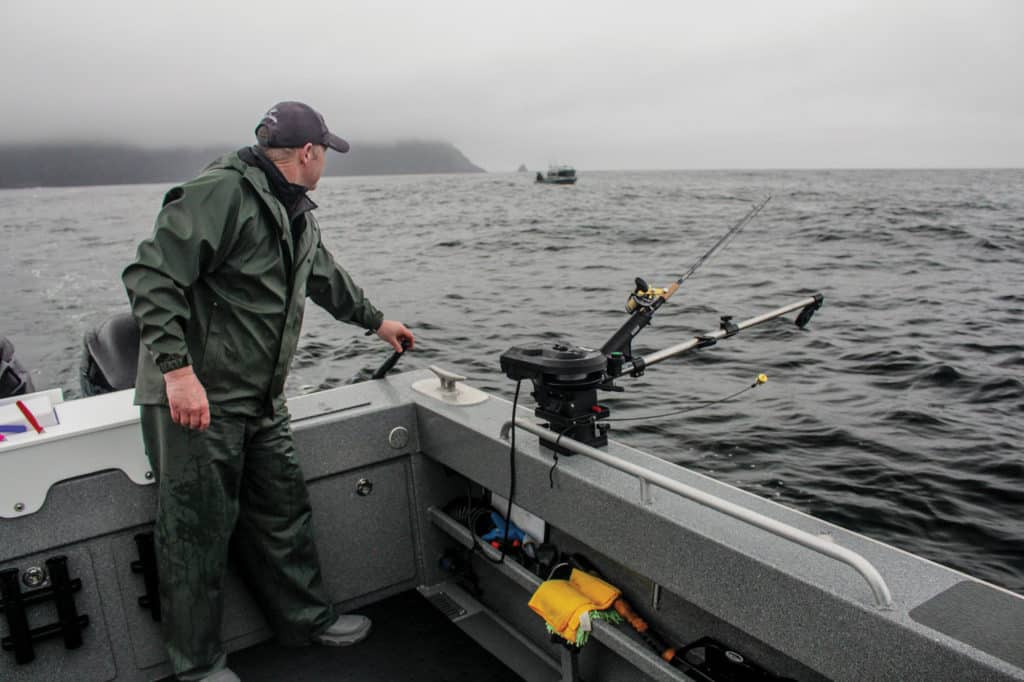
Rigging is done with plastic devices such as the Franko Bait Rotator, Rotary Salmon Killer and Krippled Anchovy. Just insert the bait into the plastic head and anchor it with a pin or clip. These require no knowledge of rigging and give a good spinning action to the bait.
When trolling, hold a speed of 2 1/2 to 3 knots and stagger the depth of the lines to avoid tangles. The depth of the bait schools should dictate how deep to set your gear with either sinkers and releases or downriggers.
Read Next: Sesame Crusted Salmon Recipe
When you find tight schools of bait on your fish finder with holes on the edges, that’s a good indicator that salmon are feeding on the fringes. When you see that type of positive reading, make it a point to circle the area with your gear, making a wide, gradual arc. Don’t make your circle too tight or you’ll tangle your lines.
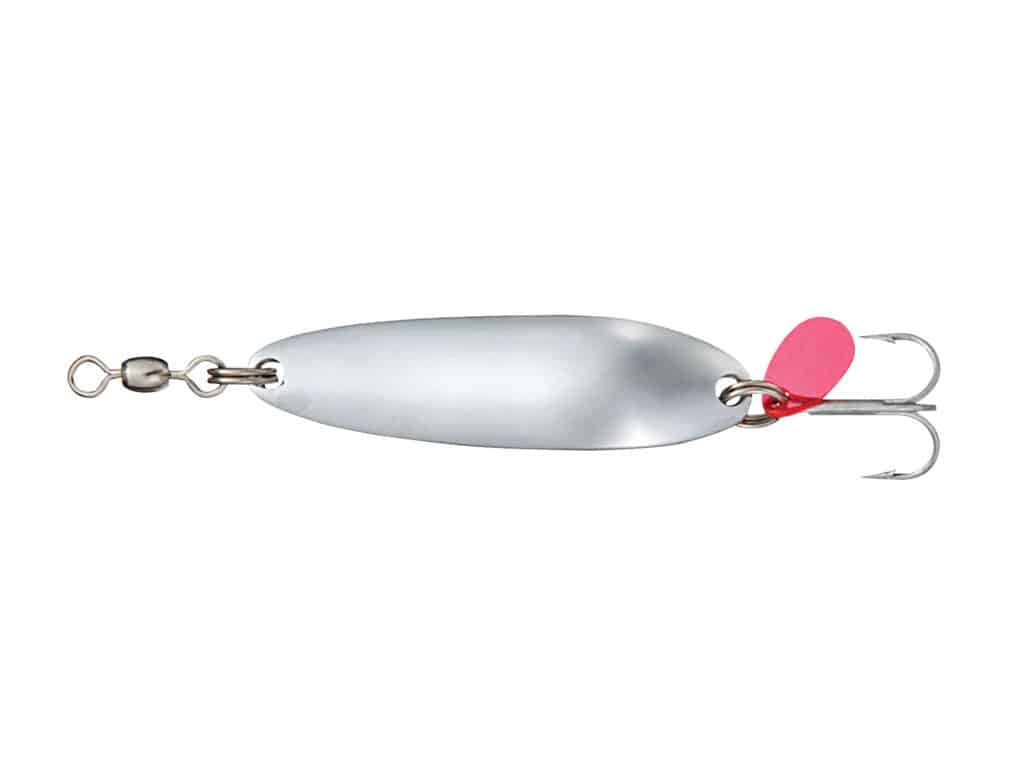
When you hook one salmon, continue trolling to avoid tangling the lines. If hooked up to multiple fish, straighten the boat and slow down. If you are in a good school, the action can be fast, so work quickly and efficiently to avoid tangles.
Planner
Salmon regulations change from season to season. A California fishing license is required, and anglers are allowed one rod per licensed fisherman on board. Check the regulations on the California Department of Fish and Wildlife website before heading out: wildlife .ca.gov/oceansalmon.
What: California coastal salmon
Where: California coast from Bodega Bay south to Half Moon Bay
When: Spring to late summer
Who:
Hi’s Tackle Box
650-588-1200, histacklebox.com
Big C’s Charters
Capt. Christian Cavanaugh
415-717-8225, bigcscharters.com
Bite Me Charters
Capt. Trent Slate
415-307-8582, bitemecharters.net
Tackle Box
Rods: 7 to 7 1⁄2-foot trolling rods rated for 20- to 40-pound line
Reels: Any with a good drag and 200 to 300 yards of 25- to 40-pound-test mono or braid
Tackle: Fish-eye sinker releases with 2 1⁄2-pound cannonball sinkers; 11-inch Bechhold, Hot Spot, Gold Star and Martin flashers, and 6- and 8-inch Big Al and Konezone flashers in chrome Mylar, red or green trim, and scale reflective tape
Bait: Rigged anchovies and herring
Lures: 4- to 5-inch Krocodile, Silver Streak, Coyote and Kingfisher spoons in chrome Mylar or natural baitfish colors; 3 1⁄2- to 4-inch hoochies in white pearl, purple haze, white glow and natural baitfish colors; 5/0 to 6/0 siwash hooks; 4 1⁄2- and 5-inch Apex trolling lures in watermelon, black and silver





